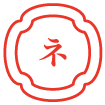Lin: The Art of Taiwanese Rush Weaving | Exhibition
“Curated by Native & Co with Taiwanese designer Chia-En Lu for London Craft Week, this exhibition explores the craft and techniques behind Taiwanese rush weaving, following its history and rebirth through contemporary design.”
During London Craft Week 2016, we put together an exhibition to introduce and celebrate the traditional craft of Taiwanese rush weaving. We hosted three workshops throughout the week, allowing visitors to experience basic weaving skills using the triangle rush from Taiwan.
Before putting on the exhibition and workshops, we began to do our research into the history of rush weaving to get a better understanding of its importance in Taiwanese craftsmanship and culture. Working closely together with designer Chia-En Lu for the exhibition, we were able to showcase both traditional craftsmanship and contemporary adaptations of rush weaving. The workshops provided visitors with an opportunity to experience the meticulous processes of rush weaving, which cannot be reproduced by machine.
With over 300 years of history, rush weaving is one of Taiwan’s oldest and most traditional crafts. Lin (藺) - wild rush grass, is native to the paddy fields of Yuan-li in western Taiwan. The weaving of rush is believed to originate from the Taokas tribe of the Pingpu indigenous people. The craft evolved over centuries and thrived under Imperial Japan, becoming one of Taiwan’s main exported goods. Rush weaving cannot be replicated by machine and requires immense skill and patience. The exhibition Lin, explores the craft and techniques behind Taiwanese rush weaving, following its history and rebirth through contemporary design.
STEP BREAK DOWN FOR PREPARING THE RUSH
__
Planting, Harvesting, Sun-Drying
Triangle rush is planted in paddy fields in early spring and harvested three times a year. By early summer, the first crop has grown to 6 feet tall and is cut by hand with a sickle. The rush is then laid flat and regularly rotated to dry in the sun for two weeks. The drying process stiffens and darkens the colour of the rush by evaporating the locked water in the stems.
Root-Trimming
Triangle rush is planted in paddy fields in early spring and harvested three times a year. By early summer, the first crop has grown to 6 feet tall and is cut by hand with a sickle. The rush is then laid flat and regularly rotated to dry in the sun for two weeks. The drying process stiffens and darkens the colour of the rush by evaporating the locked water in the stems.
Pounding
The rush is then tightly bound with thread and beaten with a wooden mallet. The pounding breaks down the outer strands of the rush giving it greater flexibility and durability by removing any brittleness caused by the drying.
Splitting
Every individual rush stem is then split by hand. A needle is pierced through and run down the rush’s straight grain. Each stem is cut into two or three pieces depending on the thickness of the rush and the needs of the weave pattern.
Rubbing
By splitting the rush, the inner fibres are exposed to the air. To prevent any moisture from being absorbed, these fibres are rolled inwards, by rubbing the rush back and forth repeatedly.
Hand-Weaving
Although there is a multitude of variations and techniques to weave rush, their principal requirements are the same. The rush is spread and divided into two groups: an upper group for the right hand and a lower group for the left hand. Weaving patterns differ, but in repetition are a methodical use of hooking, pulling, braiding and stitching of the rush.














